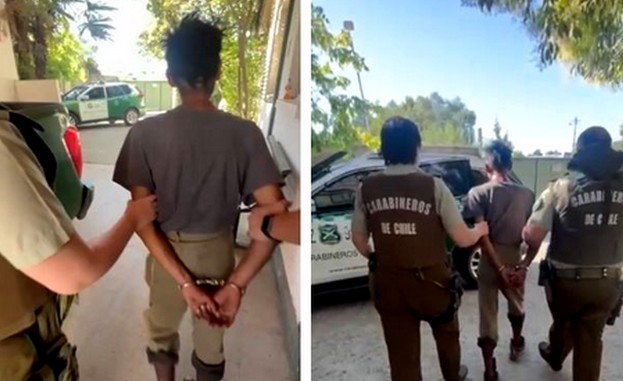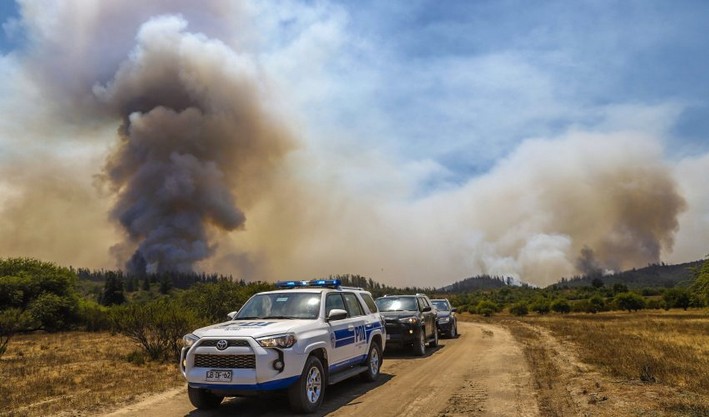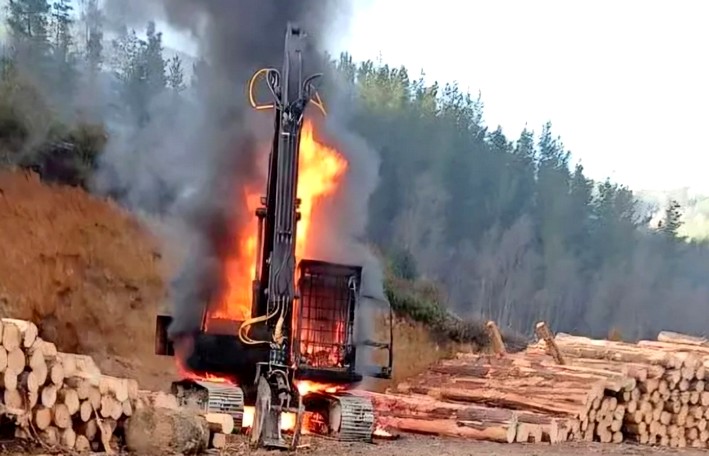Forest fire in Coihueco exceeds 900 hectares
By the last emergency meeting held by representatives of Conaf Ñuble with the authorities of the Coihueco commune, the fire that brought them together—the first of the 2024 season—had already spread across nearly 900 hectares by 5:45 PM this Monday.
According to initial investigations, the origin was a burn initially authorized within the San Isidro estate, owned by Forestal Arauco in the Coihueco commune. However, it reportedly extended beyond the permitted days and was affected by the Puelche wind, which ultimately changed its direction and spread until it became uncontrollable.
Juan Salvador Ramírez, regional director of Conaf, said at the close of this edition that the fire remained active, "with personnel and aerial and ground resources working, including a first-response truck and a water-dropping plane, while Arauco has ground crews, three mechanized brigades, skidder vehicle teams, and a group of supervisors."
Other brigades involved in controlling the fire include Forestal Cambium and Forestal Mininco, in addition to two command posts led by Conaf firefighters.
"There are no threats to homes, only forest resources, and it is being fought by ground and air personnel," the director noted.
According to Conaf, the affected hectares contained pine and eucalyptus plantations, native forest, grasslands, and scrubland, while the total threatened area is approximately 2,000 hectares.
Naamán Sanhueza, head of the Emergency Management Office of the Coihueco Municipality, told La Discusión: "We hope that by tomorrow (today), more resources will be added to the fight, including brigades from other regions of the country. Right now, the fire is not under control but is being directed, and the goal is to push it toward the Ñuble River."
Regarding the populated areas closest to the fire, this corresponds to the Bureo sector, located about 4 kilometers from the so-called "tail of the fire." According to Sanhueza, "it is very unlikely to spread toward those houses unless there is a very sudden change in wind direction."
During the night, only nighttime brigades will remain to prevent the fire from spreading in unplanned directions.
Fuel Removal
The mayor of San Fabián, Claudio Almuna, dismissed early reports from Monday and clarified that "in San Fabián, we did not have any hectares affected, as the entire fire was concentrated on the other side of the bridge (border with the Coihueco commune), and the fire did not reach the Ñuble River."
Nonetheless, the emergency units of the commune, which have also assisted in controlling the fire, "have continued monitoring the situation," he added.
Almuna anticipated: "We had requested burn authorizations weeks ago for all the combustible material that grew in the hills because winter is the best time to remove it. If not done, in summer, it becomes high-risk material, so we intend to continue with the burns."
Criticisms
However, voices from the commune criticized the burning method, as the fire originated from one such practice. "San Fabián and its surroundings are in an alarming situation, unprotected in terms of public health and biodiversity conservation. It is inconceivable that, amid the current environmental and health crisis, practices that are entirely avoidable continue to be permitted, especially by institutions that have the resources to implement less harmful technologies for the environment and public health," wrote Dr. Valeria Carranza in a public letter.
She added: "It is essential to demand that those responsible for authorized burns and forest fires take responsibility for primary prevention by improving technologies to avoid these harmful practices. Secondary prevention measures must also be implemented, such as funding masks, inhalers, and treatments, establishing an effective link with the health sector."
Source:ladiscusion.cl

















